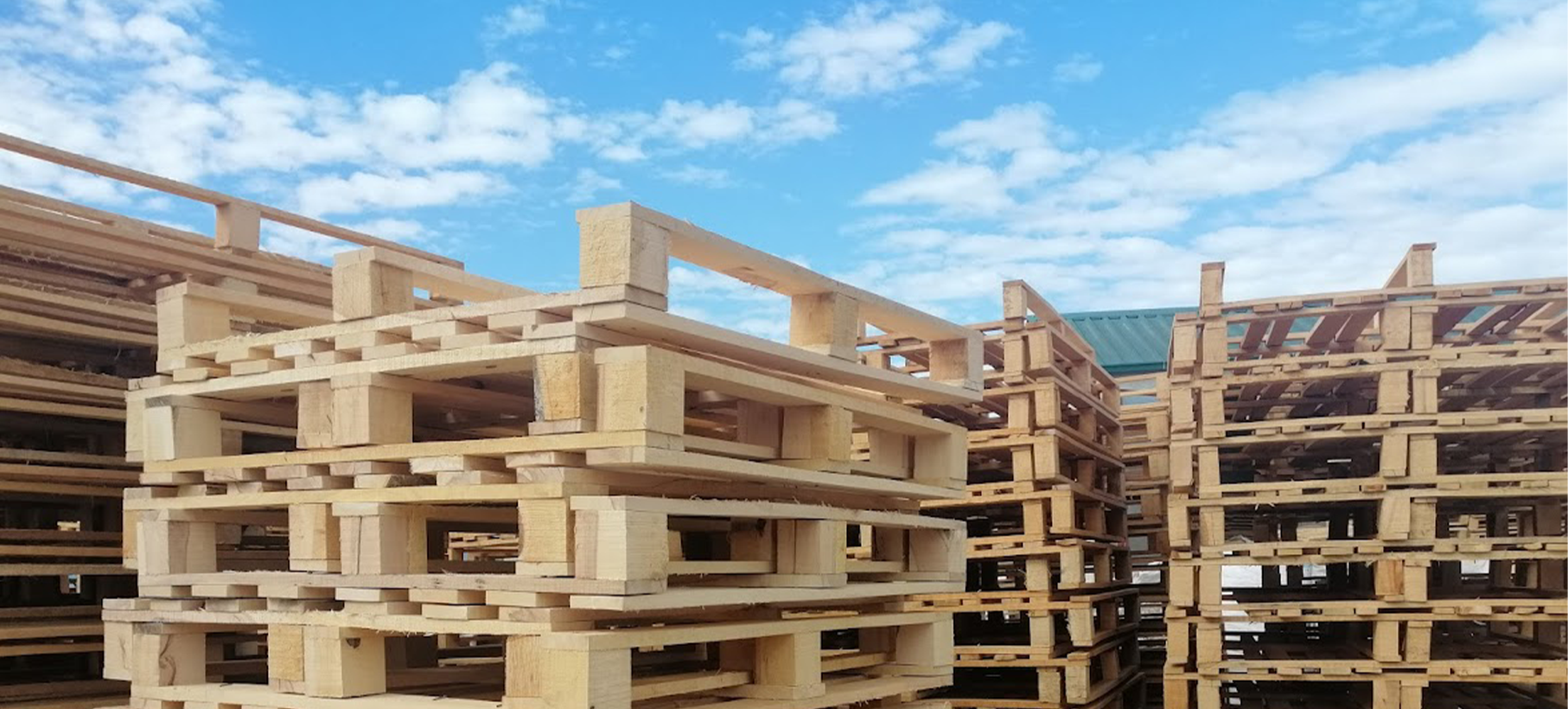If this is your first time looking into wood pallets for your business, your head might start spinning from the overload of information on the topic.
There are so many options on the market and so many different names for identical or similar products, how could you possibly know which is which?
After getting various queries about the differences between a few of our pallets, we thought it wise to write a handy guide for future reference for all our partners. Even though it seems confusing at first, the two most commonly used pallets are unique and used for vastly different loads.

What’s the Difference Between EUR/EPAL and One-Way Wood Pallets?
EUR/EPAL pallets and one-way wood pallets are two common types of wooden pallets used in logistics and shipping. At their core, they differ in design, construction, and intended use.
EUR/EPAL
The EUR/EPAL pallets are a cause for confusion for many business owners, especially those with little experience. However, if you’re dealing with logistics and transport in any capacity, the EUR/EPAL pallets are most likely the pallets you’ll be working with.
The main difference between these and the one-way pallets is that EUR/EPAL pallets are standardized and regulated by the European Pallet Association (EPAL). Aside from this, they’re also recognized by the International Organization of Standardization (ISO).
They go by two names (Euro or EPAL), but they’re the same pallet. An important detail about these pallets is that they have chamfers on all four corners and beveled upper edges on the skids.
These wood pallets are the best choice for multiple-use cycles because they’re sturdy and durable for repeated use. Due to being certified by the European Pallet Association, they undergo strict quality control measures to ensure they meet the standards.
EUR/EPAL pallets also come in a standard size of 80 x 120 cm, a size recognized all over Europe. When it comes to the material, EUR/EPAL pallets can be hardwood, softwood, fiberboard, metal, or plastic. Of course, since wood is cheaper and more sustainable, it’s the standard solution and the one most manufacturers prefer.
One-Way
On the other hand, one-way (or custom) wood pallets aren’t standardized and don’t come in a specific size or sturdiness. These pallets are made of treated wood and are the ideal choice if you need more flexibility and adaptability.
This means your wood pallet manufacturer can make them tailored to your specific needs, i.e. create the size and thickness you need for your load. Although these pallets aren’t certified by the European Pallet Association, they have an HT (Heat Treatment) certificate that ensures they meet international shipping standards.
And despite the name, the one-way pallet is suitable for multiple uses, making it more cost-effective.
The one-way pallet is suitable for various types of shipments, but since it isn’t standardized, you must be aware of any requirements or limitations if you’re shipping goods to another country. As the custom wood pallets can be different from one another, it’s important to check whether the region you’re shipping to accepts them before purchasing.
Such considerations are not as pressing for EUR/EPAL pallets.
Why Choose Gama Design?
Gama Design is an official reseller of new and licensed EUR/EPAL pallets for Macedonia. Our license number (000031) ensures we abide by stringent regulations and provide the very best service to our partners.
We produce 500 to 1000 pieces daily, so we’ll be ready with pallets in stock whenever you need them.
We understand the importance of choosing a good wood pallet manufacturer. This is why we’re always ready to talk you through the process and help you make an informed decision.
Choose with confidence and contact Gama Design.



